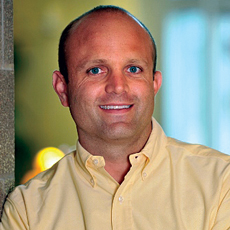
Each for different reasons, many skilled nursing and long-term care providers are looking at building short-term rehab or converting long-term care environments into short-term rehab wings. The logical question that follows is how different are these two settings in a physical sense? Operational and financial changes aside, how should providers look at the infrastructure to serve rehab residents, especially when they are deeply experienced in the long-term care business.
Although it is less and less common all the time, one thing that a skilled nursing wing might have that no STR unit has is semi-private units. A mindset we hold in our development business is to think of STR as not so much healthcare (although it is) but rather hospitality. The stays are longer obviously, but the mindset is not – residents expect to be in a rehab building for a short period and return home, just like a hotel. And you would not likely return to a hotel that made you share a room with a stranger. Equally as important, we find that a rehab resident is likely to have more family visitors that stay for longer periods and a larger private suite is much more encouraging of this support.
Similarly, the public or common bathing room (your “spa”) is space better used for something else in the rehab setting. Where do you bathe in a hotel? Not in a room down the hall. The STR private bath might be built or laid out to facilitate OT work but it should be done in the private setting of the resident’s room. A significant portion of the private baths should include a “real” tub-type bath/shower as well as accessible bathing for the full OT benefit.
When possible, STR residents prefer to begin their recovery in privacy so the suites should allow for full access to both sides of the bed. This includes access for equipment and staff. In our experience, this is wider than the typical allowance for wheelchair access – 60” or more depending on the types of rehab being done. We also see a broader use of ceiling lifts. Whereas LTC units may install a few lifts for bariatric residents, the STR approach is to assume 80% of the residents arrive needing assistance.
Effective therapy requires a multitude of different equipment so we try to be creative with concealing storage. Thinking again like a hotel, having equipment in the corridors and doorways takes away from the hospitality feel. We prefer to use equipment that can be put away rather than build in fixed mobility aids in the public spaces to preserve the aesthetic.
Another shift in thinking involves the care team itself. Mouji Linarez-Castillo, a healthcare expert and consultant in South Florida says that STR teams are multi-disciplinary and often work together unlike LTC units that may see a podiatrist or geriatrician but usually separately. “The best rehab centers include collaboration spaces so the medical teams not only see their patients but also collectively optimize care plans” says Linarez-Castillo.
She also recommends that if a rehab center is multi-story, there be a therapy suite on each floor. “You want to maximize the time a resident is either getting therapy or recovering where they see fit. A lot of travel is inefficient but it also can be very strenuous for the patient.”
If the space is at a premium, Linarez-Castillo recommends making therapy areas flexible so they can be recreational or activities spaces when not being used for therapy. Because the residents are gaining abilities from therapy, they often move from wanting isolation to craving social interaction and support from fellow patients facing similar challenges.
The last distinction of note we try to implement is to make as many areas as possible accessible for OT. Be it cooking, laundry, cleaning, dressing, automobiles, medicines, or even office work, we want to have a place a resident can prepare for their return home. In the LTC world we often think of protecting residents from spaces or devices that could injure them. But in rehab the intent is almost the opposite – deliberate integration.
In all honesty, the transformation from long-term care to short-term rehab is not one that is always and obviously feasible. The physical plant is different; both are purpose-built spaces for similar but distinct goals. Business decisions aside, there is a lot of study and investigation required to evaluate a conversion. While we love the idea of repurposing older and underutilized long-term care beds, bed count and square footage don’t correlate directly if the goal is to optimize patient outcomes.



